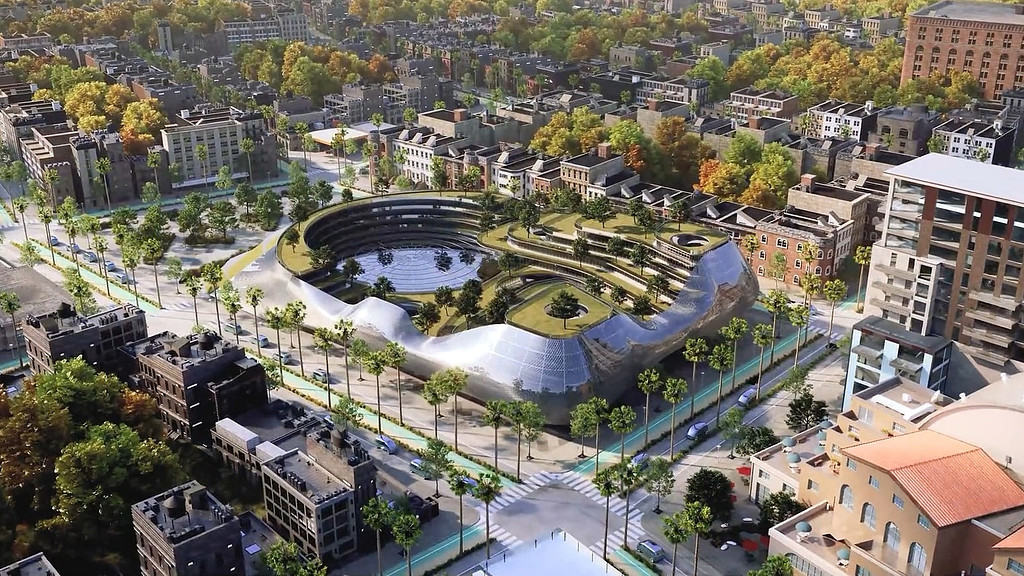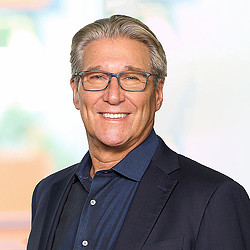Together, EVs, AVs, and Multimodal Transportation Will Create More Vibrant Cities
August 15, 2022 | By Andy Cohen
Editor's Note: this piece was originally published on Smart Cities Dive.
Flying cars, transporter beams, pneumatic tube people-movers — the far-fetched ways that TV and film have depicted mobility reveal some core truths about our aspirations for transportation: We want the act of moving around our cities and communities to be convenient, quick, clean, accessible, and inclusive. So what does that look like, both today and in the years to come? I believe the future of mobility is electric, autonomous and multimodal. In a world where disruption is the only constant, we can use this framework today to start designing better infrastructure, better cities and a better future.
Wider implications of electric vehicles
This year, the number of EVs sold worldwide is projected to top 10.5 million, a nearly 4 million increase over 2021. This dramatic growth is set to usher in a series of equally dramatic changes to our cities — changes that, if innovatively conceived and well-executed, will improve the way we live, work, and experience the world around us.
For example, the more than 145,000 gas stations in the United States often occupy prime corner real estate. A partnership between Gensler and BMW Designworks called Architecture x Mobility is exploring how to transform these facilities into destinations for dining, shopping, leisure, or even work – decentralizing the amenities and functions urban residents need. These new community centers can bring people together at places that were originally only meant for passing through. This would help create a network of “20-minute neighborhoods” where residents can access everything they need by walking, biking, or using other micromobility services. It also would support cities’ sustainability goals by repurposing existing structures instead of building new.
Electrification moves vehicles more broadly into the ecosystem of consumer electronics, opening up a whole new world of possibilities. Imagine, for instance, how an electric vehicle could serve as an energy and data wallet, collecting and storing solar energy to later trade or sell to the places where it travels, or how it could gather real-time data about its surroundings to inform navigation systems and other technologies. EVs could also give consumers greater control over their energy purchases, allowing them to buy power from sources that align with their preferences and values. Overall, EVs empower users to live more connected and sustainable lives.
The autonomous revolution
Although autonomous vehicles are not yet as ubiquitous as EVs, automation — in the form of automatic emergency braking systems, driver-assist technology, adaptive cruise control and self-parking systems — is making transportation safer and more streamlined than ever before.
As fully autonomous cars and trucks enter the market, they will completely transform how we commute, transport goods, and design our cities. The need for parking garages will decrease, opening up valuable real estate to new uses. We can bring forward the positive changes we saw in our cities during the pandemic: outdoor dining spilling out onto sidewalks and curbside parking, expanded lanes for bicyclists, and streets entirely closed to cars where people can stroll, exercise, and generally enjoy the outdoors.
Highway congestion will also ease as autonomous long-haul freighters transport goods in dedicated lanes. As the Wall Street Journal recently reported, several companies are preparing to roll out autonomous trucks as early as next year, with the cost of new technology offset by the elimination of labor costs and the ability to run the vehicles nearly 24 hours a day. Imagine the improved human experience when large trucks no longer clog highways during rush hour and instead move during off-peak hours. As with any disruption of the status quo, there will be challenges. But from those challenges will emerge greater opportunity to make urban infrastructure better suited to the people who utilize it.
Multimodal as the way forward
Mobility of the future must be multimodal and built on a foundation of choice. Public transportation, which has taken a major hit during the pandemic, will remain the backbone of urban mobility, with AVs providing the point-to-point service that bridges the first and last mile between riders’ homes and the nearest transit stop. But cities must invest in improving the user experience, taking cues from aviation design to make subways, buses, and other public systems safe, secure, and healthy. If a subway station were more like an airport – with abundant daylight, desirable amenities like retail and dining, and seamlessly integrated security measures – passengers might be more willing to take the train and even spend time at the station, generating needed revenue for the system.
Where public transportation systems connect 20-minute cities to one another, movement within neighborhoods can be facilitated by AVs, ride-sharing programs, and micromobility services like e-bikes and e-scooters. Working in tandem, these mobility systems — electric, autonomous, and multimodal — will allow residents and visitors to experience their city like never before, bringing new vibrancy to communities and improving the health of the city for all.
For media inquiries, email .

